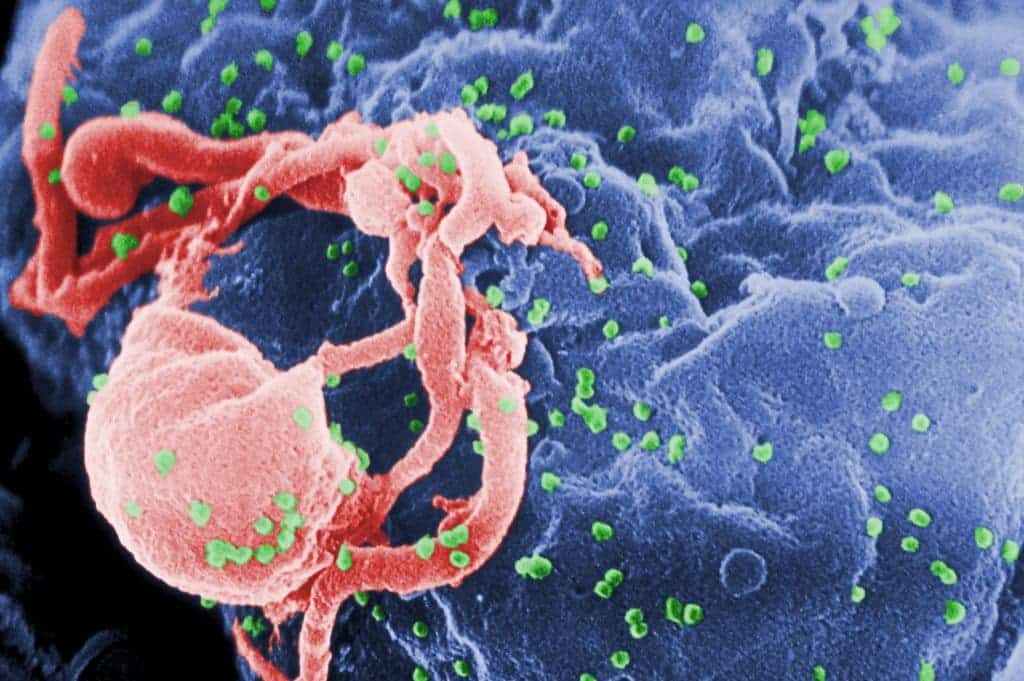They say what doesn’t kill you makes you stronger, and unfortunately, that seems to be the case for HIV viruses. A new study has shown that CRISPR, a promising technique in fighting the dreaded virus, may actually make it stronger.

Scanning electron micrograph of HIV-1, colored green, budding from a cultured lymphocyte. Photo Credit: C. Goldsmith Content Providers: CDC
Clustered regularly-interspaced short palindromic repeats (abbreviated as CRISPR, pronounced crisper) is a gene editing technology. In recent years, there have been several papers which documented how “genetic scissors” could fight HIV. We’ve recently written about one of them, and those results still stand today, but there are reasons to worry.
When HIV hijacks our cells, it inserts its genome into our cells’ DNA and then hijacks the cell to produce more copies of itself. It’s taking advantage of your body and using it against you. At this moment, there is no cure for HIV. There are antiretroviral drugs which can successfully keep HIV infections under control and keep the virus in a state of dormancy, but there is no reliable way to get it out of our systems.
What researchers did was to equip our T-cells to cripple the virus with an enzyme called Cas9. T cells or T lymphocytes are a type of lymphocyte (a type of white blood cell) that play a central role in cell-mediated immunity. T cells equipped with Cas9 were observed to damage the HIV genome, and make it unable to properly reproduce. This work, led by virologist Chen Liang, at McGill University in Montreal, Canada seemed to work just fine… at least at first. The team noticed that two weeks later T cells were pumping out copies of virus particles that had escaped the CRISPR attack. They also learned that the virus exhibited mutations around the area Cas9 was designed to destroy – in other words, it became stronger.
“On the one hand, CRISPR inhibits HIV, but on the other, it helps the virus to escape and survive,” Liang told New Scientist.
In a way, this is not completely surprising. Researchers have known for quite a while that HIV is extremely adaptable and resilient, but the sheer speed at which it managed to overcome this defense line is stunning.
“The surprise is that the resistance mutations are not the products of error-prone viral DNA copying, but rather are created by the cell’s own repair machinery,” Liang added.
However, this can be a surmountable problem, especially as CRISPR is still a relatively new technique and can undergo massive development. Scientists think this can be done by inactivating several essential HIV genes at once, or by using CRISPR in combination with HIV-attacking drugs. A clinical trial is already underway, altering human DNA by using another gene-editing tool, zinc-finger nucleases. But it won’t be easy. HIV basically took one of our best weapons against it, beat it, and became stronger in the process – in no more than two weeks. The fight against HIV is a long and winding one, with ups and downs all along the way, but hopefully we’re zooming in on a cure.









